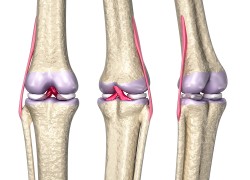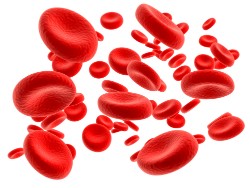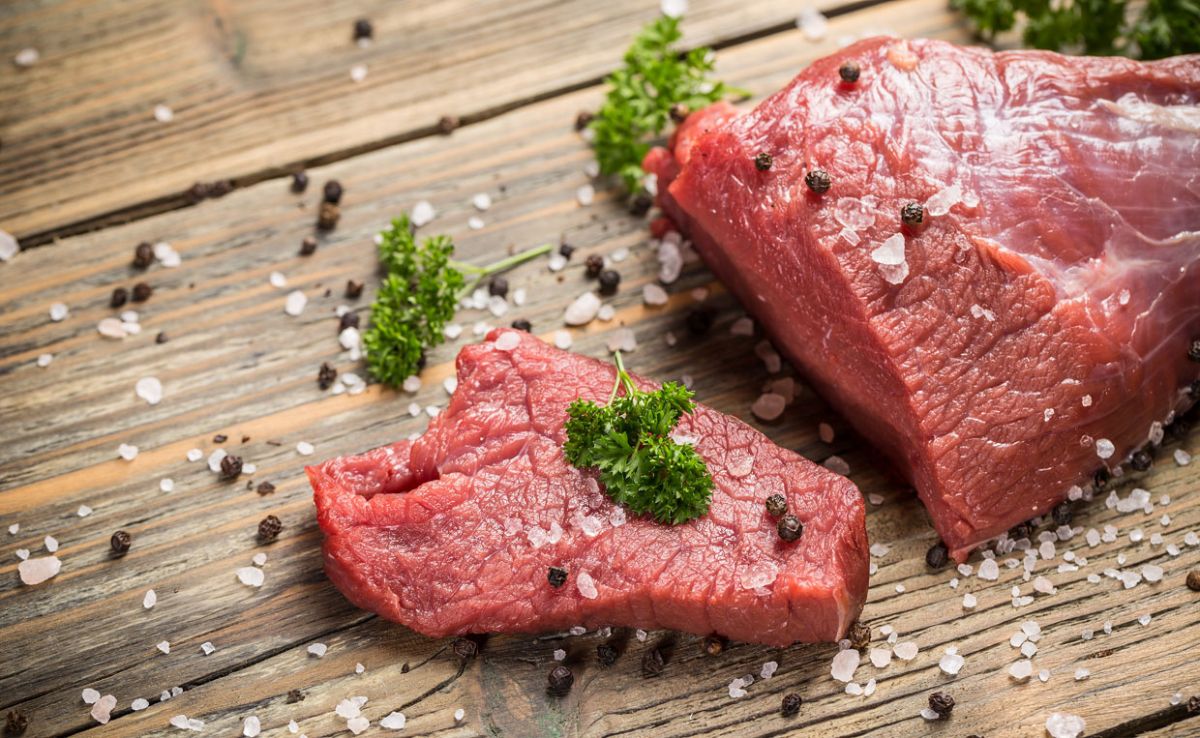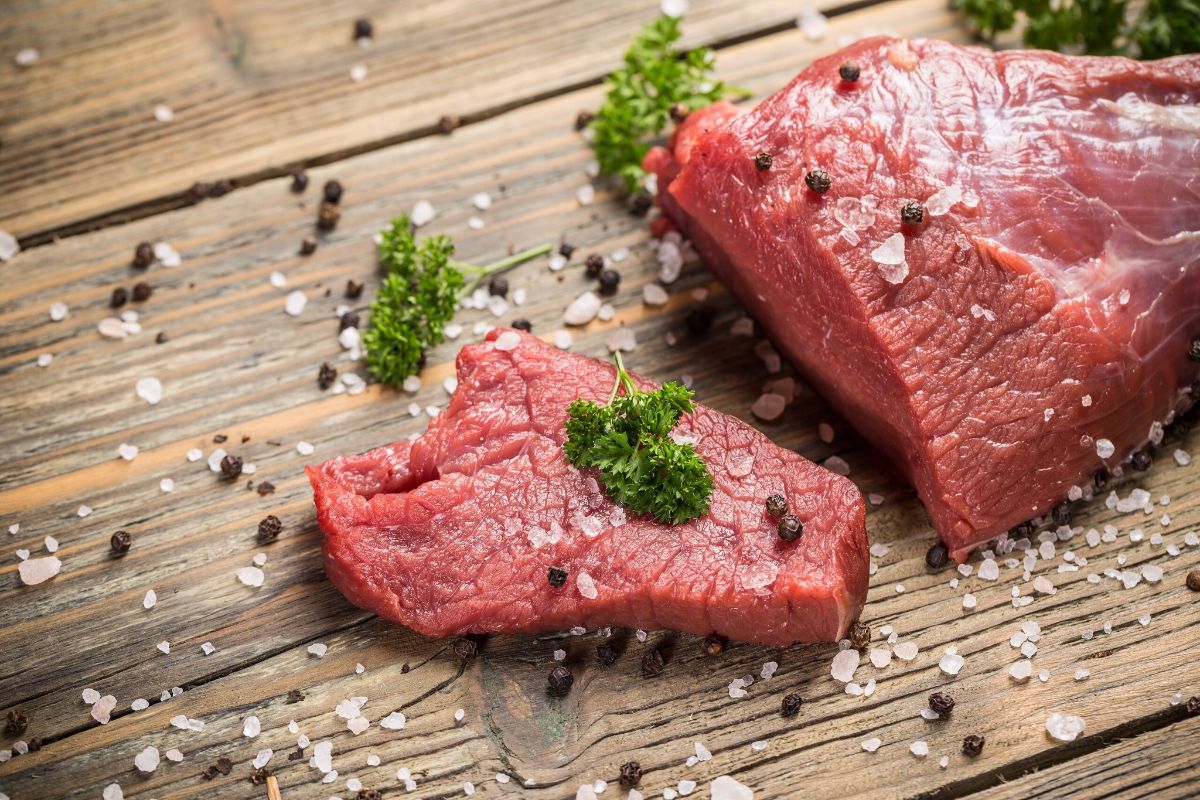What is meat good for health — 7 scientific facts
Meat of any animal or poultry is an extremely valuable source of protein (consisting of essential amino acids), as well as a number of vitamins and minerals.
Meat products have a number of proven beneficial properties and, when used wisely, have a positive effect on almost all systems of the human body.
However, it is extremely important to choose the right cooking methods and types of meat in order to avoid complications associated with eating meat dishes: obesity, malignant tumors, cardiovascular and endocrine disorders.
7 useful properties
Below are 7 basic facts about the benefits of meat (based on evidence).
1. Nutrient content

Any meat contains a huge amount of protein, which is the main building material for all cells of our body. The product is also rich in the following substances:
- B vitamins (B1, B3, B6, B12). Are involved in enzymatic and metabolic processes. They are necessary for the formation of blood cells in the bone marrow and the coordinated work of all parts of the brain. With deficiency, there is a lag in growth and development in children, neurological symptoms.
- Zinc. Supports the functioning of the immune and nervous systems.
- Selenium. The largest amount of the element is found in white meats (chicken, duck, turkey). It has a strong antioxidant effect, strengthens the immune system .
- Phosphorus. Is responsible for bone mineral density and the course of a number of metabolic processes.
- Iron. Red meat has a high mineral content ( beef , pork, mutton ). It is vital for the creation of new red blood cells in the red bone marrow.
Below is a comparative table of the content of biologically active substances in some types of meat (the specific weight or percentage of the recommended daily requirement per 100 grams of product is indicated):
| Name of the component | Pork | Chicken | Turkey |
| Calorie Content | 220-290 calories | 238 calories | 117 calories |
| Proteins | 26 grams | 18.2 grams | 24 grams |
| Fats | 21 grams | 18.4 grams | 2 grams |
| Carbohydrates | 0 grams | 0 grams | 0 grams |
| Vitamin B1 | 35 % | 2 % | 61 % |
| Vitamin B3 | 19 % | 3 % | 26 % |
| Vitamin B6 | 13 % | 26 % | 46 % |
| Vitamin B12 | 15 % | 18,3 % | 29 % |
| Selenium | 18 % | 23,1 % | 46 % |
| Phosphorus | 14 % | 20,6 % | 28 % |
| Zinc | 14 % | 17,2 % | 12 % |
| Iron | 4 % | 3,7 % | 5,7 % |
2. Strengthening bones
 According to the data
specialists from the USA, regular inclusion of animal protein in the diet has a beneficial effect on the condition of bone tissue – dystrophic changes (osteoporosis) are less common, and the risk of fractures is reduced by 69%.
According to the data
specialists from the USA, regular inclusion of animal protein in the diet has a beneficial effect on the condition of bone tissue – dystrophic changes (osteoporosis) are less common, and the risk of fractures is reduced by 69%.
Scientists recommend women should consume meat products after menopause, when, against the background of hormonal changes, there is a decrease in bone density.
With a deficiency of valuable proteins in the body, bone tissue atrophy is observed, the incidence of fractures and skeletal curvatures (scoliosis, etc.) increases.
3. Weight Loss Aid
 Poultry meat, especially the shin and thighs, has low calorie content (a lot of protein, little fat) and can be included in diets aimed at reducing body weight.
Poultry meat, especially the shin and thighs, has low calorie content (a lot of protein, little fat) and can be included in diets aimed at reducing body weight.
The use of such products causes a rapid overflow of the stomach, which ensures the rapid development of a feeling of satiety. As a result, food consumption decreases in the next few hours (up to 10-15%). Similar information lead experts from New Zealand.
4. Maintaining and gaining muscle mass
 Any kind of meat is a valuable source of essential proteins that are necessary for maintaining and gaining muscle mass.
Any kind of meat is a valuable source of essential proteins that are necessary for maintaining and gaining muscle mass.
Meat must be present in the diet of athletes, as well as during the recovery period after severe surgical interventions.
According to the information of the American scientific community, the consumption of sufficient amounts of animal protein (120-150 grams per day) It helps to prevent sarcopenia – atrophy of muscle tissue.
5. Preventing anemia
 Anemia is an extremely common disease in which the concentration in the blood decreases hemoglobin
and (or)
red blood cells
.
Anemia is an extremely common disease in which the concentration in the blood decreases hemoglobin
and (or)
red blood cells
.
The most common causes of deviation are iron and vitamin B12 deficiency due to various reasons (from improper eating behavior to diseases of the digestive system and blood system).
Any meat (but especially red meat ) contains a fairly large amount of iron and B vitamins. With their regular use, the risk of anemia is minimal.
For example, experts from the University of Chile claim that the regular inclusion of beef in the diet (3 times a week) provides reliable prevention of iron deficiency anemia, and turkey meat, according to scientists from the USA, prevents anemia associated with vitamin B12 deficiency.
6. Improving brain function
 All types of meat are rich in B vitamins. At the same time, white varieties (chicken, turkey, goose) have a higher level of these biologically active substances.
All types of meat are rich in B vitamins. At the same time, white varieties (chicken, turkey, goose) have a higher level of these biologically active substances.
Regular consumption of meat Improves memory , attention and thinking, contributes to the prevention of degenerative brain diseases (Alzheimer's or Peak's disease).
Separately, it should be noted the ability of poultry meat to reduce the severity of any stress and depressive disorders .
7. Maintenance of the thyroid gland
 Many types of meat are rich in selenium. This mineral, according to research
, is involved in the synthesis of thyroid hormones. With sufficient use of selenium, autoimmune and malignant organ lesions are less common.
Many types of meat are rich in selenium. This mineral, according to research
, is involved in the synthesis of thyroid hormones. With sufficient use of selenium, autoimmune and malignant organ lesions are less common.
For example, 100 grams of chicken provide up to 23.1% of the daily selenium requirement, turkeys – up to 46%.
Risks from use
 Unfortunately, eating meat carries certain risks for humans:
Unfortunately, eating meat carries certain risks for humans:
- Cancer. Frequent consumption of meat (especially red varieties fried in oil) it can cause the appearance of malignant neoplasms. Numerous Studies ( 1 , 2 , 3 , 4 , 5 ) have proven a link between the high frequency of red meat consumption and cancer of the following organs: esophagus, cardiac stomach, prostate gland in men, kidneys, mammary glands, large intestine (mainly sigmoid colon), colon and perianal region.
- Cardiovascular diseases. Swiss scientists claim that the consumption of processed meat (sausages, sausages, etc.) increases the likelihood of developing various abnormalities from the heart and blood vessels. Experts from the Harvard School of Public Health even cite figures of 42%.
- Type II diabetes mellitus. The detrimental effect of regular inclusion of red or processed meat on the incidence of type II diabetes mellitus has been recorded. Similar data is provided by scientists from Greece and Finland .
- Obesity. Meat is a high–calorie product rich in fats. Uncontrolled consumption can negatively affect the amount of adipose tissue in the body. For example, American studies found that frequent inclusion of red meats increases the overall energy value of the daily menu by 700 calories.
The choice of meat type and cooking method should be approached competently. Eating processed or fried meat can have a detrimental effect on your health.
Cooking Tips
 The most useful ways of cooking meat are:
The most useful ways of cooking meat are:
- Stewing;
- Boiling;
- Steaming;
- Baking in the oven.
Less valuable options are: drying, salting, smoking.
The most harmful way is frying, especially in oil. During this process, a number of extremely dangerous and toxic compounds are formed:
- Nitrosamines. They contribute increased risk of developing malignant tumors.
- Heterocyclic amines. Are formed exclusively at high temperatures. Increase the likelihood of cancerous cell degeneration of the colon and rectum , pancreas , prostate for men.
- Glycation end products. Increase the probability of occurrence of cardiovascular and endocrine diseases.
- Oxidized lipids. Frequent inclusion of such substances in the diet is associated with a high incidence of myocardial infarction, stroke, and development atherosclerotic deposits on the walls of arteries.
Separately, it should be noted that processed meats (sausages, sausages, bacon, canned food, ham) are no less dangerous to health. They should be limited in the diet or completely excluded.
Also, in no case do not eat raw meat, as in this case there is a high risk of parasites entering the body.
Admission rules
 There are a number of simple rules that allow you to increase the beneficial potential of meat dishes and reduce harm:
There are a number of simple rules that allow you to increase the beneficial potential of meat dishes and reduce harm:
- Combine meat dishes with vegetables. Cruciferous vegetables (cabbage, broccoli) enrich the body fiber , as a result, the meat is better digested. They are also neutralize heterocyclic amines.
- Drink coffee or red wine. Coffee too blocks the effect of heterocyclic amines. And the wine reduces negative effects of carcinogens formed during the frying of meat on the mucous membrane of the digestive tract.
- Control consumption. Meat is a high–calorie product. It is recommended to eat no more than 1-2 meals a day and carefully monitor the energy value so that the weight remains normal.
- Exclude processed meat . It is rich in flavor stabilizers, flavors and various toxic compounds.
- Choose the manufacturer wisely. Some farms often use growth hormones and antibacterial drugs, which can adversely affect human health.
Conclusion
- Thus, meat is a valuable natural product that contains not only essential proteins and fats, but also a number of vitamins and minerals.
- With regular consumption, normalization of brain function is noted, improvement of the musculoskeletal system, and the risk of diseases from the blood system and thyroid gland is reduced.
- It is very important to choose safe cooking methods, exclude fried dishes and processed meat.





